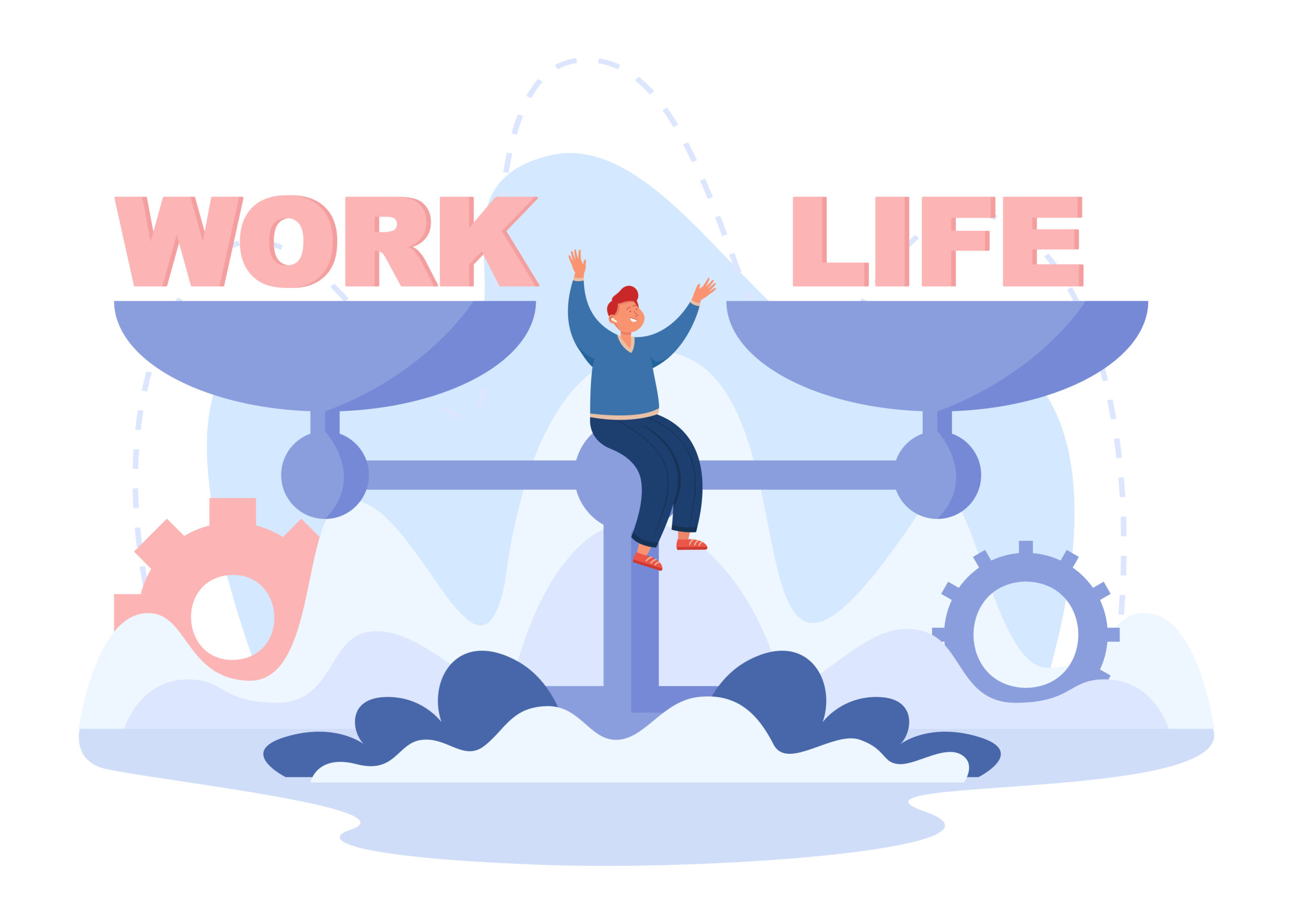
Achieving a healthy work-life balance as a business owner can be challenging. However, with the right strategies in place, it is possible to create a harmonious contrast between work and personal life. By implementing six key practices, you can effectively manage your time, prioritize tasks, and reduce stress levels. These methods include setting boundaries, delegating responsibilities, scheduling regular breaks, staying organized, practicing self-care, and fostering open communication with your team. Finding equilibrium between work commitments and personal well-being is essential for long-term success and overall happiness.
Table of Contents
Prioritizing Personal Wellbeing
Mindfulness Techniques
Incorporate mindfulness techniques into your daily routine. Take short breaks to focus on your breathing and clear your mind. This practice can significantly reduce stress levels and enhance your overall well-being.
Regular Physical Exercise
Engage in regular physical exercise to maintain a healthy body and mind. Whether it’s a quick walk during lunch breaks or a gym session after work, staying active helps boost your energy levels and promotes mental health.
Sufficient Sleep
Prioritize getting sufficient sleep each night. Aiming for 7-9 hours of quality sleep allows your body to rest and recharge, leading to improved focus, productivity, and overall health.
Establishing Firm Work Boundaries
Clear Client Communication
Maintaining a healthy work-life balance as a small business owner involves setting clear boundaries with clients. Communicate transparently about response times to manage expectations effectively. By establishing specific communication protocols, you can ensure a more structured work environment.
Designated Work Hours
To prevent work from encroaching on personal time, it’s crucial to establish designated work hours. As a small business owner, defining specific start and end times for work helps create a clear separation between professional responsibilities and personal life. This practice promotes efficiency and reduces burnout.
Effective Employee Communication
Effective communication with employees is essential in maintaining firm work boundaries. Clearly convey your off-hours and the importance of respecting that time. Encourage open dialogue to address any concerns or issues that may arise regarding work schedules. By fostering a culture of mutual respect, you can uphold a healthy work-life balance for yourself and your team.
Embracing Effective Time Management

Utilize Time-Tracking Tools
Business owners can benefit from utilizing time-tracking tools to enhance productivity and efficiency. By monitoring their daily activities, they can identify where enough time is being spent and where it is being wasted. These tools provide valuable insights into how times are allocated throughout the day, helping owners make informed decisions on optimizing their schedules.
Implement the Pomodoro Technique
The Pomodoro technique is a popular time management method that involves breaking work into intervals separated by short breaks. This technique can help business owners improve focus, maintain high energy levels, and increase productivity. By dedicating focused bursts of work followed by brief breaks, owners can accomplish tasks more effectively while avoiding burnout.
Delegate Tasks Efficiently
Delegating tasks efficiently is crucial for business owners to free up valuable time for strategic planning and personal activities. By assigning responsibilities to capable team members or outsourcing non-core tasks, owners can focus on high-priority activities that require their expertise. This allows them to strike a balance between work and personal life, leading to increased satisfaction and overall well-being.
Incorporating Regular Breaks
Encouraging Breaks
As a business owner, incorporating short breaks into your work routine is crucial for maintaining productivity and preventing burnout. Encourage your employees to take regular breaks throughout the day to recharge and stay focused. By allowing yourself and your team to step away from work tasks periodically, you create space for renewed energy and creativity.
Practicing Relaxation Techniques
During these breaks, it’s beneficial to practice relaxation techniques such as deep breathing exercises or quick stretches. These activities can help alleviate stress and tension, promoting a more relaxed state of mind. By incorporating these practices into your daily routine, you can improve your overall well-being and mental balance.
Incorporating regular breaks not only benefits individual productivity but also contributes to a healthier work environment. Here are some key points to consider:
- Pros:
- Boosts productivity by enhancing focus and creativity.
- Prevents burnout and reduces stress levels.
- Cons:
- Potential interruptions in workflow if breaks are not managed effectively.
Remember, taking short breaks doesn’t mean sacrificing productivity; rather, it enhances it by giving your mind the necessary rest to function optimally. By prioritizing self-care through regular breaks, you pave the way for a more balanced and fulfilling work-life dynamic.
Learning to Decline Excess Work

Assess Capacity
Evaluate your workload capacity before taking on new projects or tasks. Understanding your limits prevents overcommitment.
Politely Decline
Politely decline extra work that could overwhelm you. Setting boundaries is crucial for maintaining balance.
Transparent Communication
Communicate openly with clients and colleagues about your workload boundaries. Being upfront avoids misunderstandings.
Assessing your capacity allows you to manage your workload effectively.
- Determine the time and effort required for each task.
- Prioritize tasks based on deadlines and importance.
- Delegate tasks when necessary to lighten your load.
Politely declining excess work helps prevent burnout and stress accumulation.
- Politely thank the offer but explain your current commitments.
- Offer alternative solutions if possible, such as a later start date.
- Emphasize the importance of quality over quantity in your work.
Transparent communication fosters understanding and respect in professional relationships.
- Clearly communicate your availability and limitations.
- Discuss potential adjustments to deadlines or expectations if needed.
- Build trust by being honest about what you can realistically handle.
Scheduling Enjoyable Activities
Social Outings

Plan regular social outings with friends and family to unwind and recharge. These moments provide the perfect opportunity to step away from work stress and connect with loved ones. By prioritizing these gatherings, you can create a healthy balance between your professional and personal life.
Hobbies and Interests
Allocate time for hobbies or interests outside of work to foster creativity and relaxation. Whether it’s painting, gardening, or playing a musical instrument, engaging in activities you love can significantly reduce stress levels. Embracing these pursuits not only enhances your well-being but also boosts productivity when you return to work.
Vacations and Getaways
Schedule vacations or mini getaways to disconnect from work and rejuvenate. Taking time off allows you to recharge both mentally and physically, leading to increased focus and motivation upon your return. Whether it’s a weekend trip to the countryside or a week-long beach vacation, giving yourself the chance to unwind is essential for maintaining a healthy work-life balance.
Organizing Tasks Efficiently
Prioritizing Tasks
Prioritizing tasks is crucial for maximizing productivity as a business owner. By focusing on urgency and importance, you can ensure that critical tasks are completed promptly. This approach helps in efficiently managing your time and resources.
Utilizing Project Management Tools
Project management tools play a vital role in streamlining workflow and enhancing collaboration within your team. These tools enable you to assign tasks, set deadlines, and track progress efficiently. By leveraging such tools, you can ensure effective communication and coordination among team members.
Implementing the Eisenhower Matrix
The Eisenhower Matrix is a powerful technique that helps in categorizing tasks based on their importance and urgency. By using this matrix, you can prioritize activities effectively and focus on high-priority tasks first. This method allows you to optimize your productivity by concentrating on tasks that align with your business goals.
Keeping Work at the Workplace
Designated Workspace
Establish a designated workspace at home to maintain a clear boundary between work and personal life. This area should be free from distractions and solely dedicated to work tasks. By having a specific location for work, you can enhance focus and productivity.
Creating a designated workspace also helps in mentally switching into work mode when you enter that area. It signals your brain that it’s time to focus on work-related activities, improving your efficiency and concentration levels. Moreover, this separation aids in preventing work from encroaching on your personal space.
Rituals for Work-Life Transition
Developing rituals to mark the end of the workday is crucial for maintaining a healthy balance between professional and personal life. These rituals can include activities like shutting down your computer, tidying up your workspace, or going for a short walk after work.
By establishing these rituals, you create a psychological boundary between work and personal time. This separation is essential for preventing burnout and ensuring that you can fully disconnect from work-related stressors. It allows you to unwind and shift your focus towards relaxation and rejuvenation.
Avoiding Work in Personal Spaces
Avoid bringing work-related tasks or devices into personal spaces within your home. Keep laptops, files, or any other work materials confined to your designated workspace. This practice helps in maintaining a physical boundary between work responsibilities and personal activities.
When you refrain from working in personal spaces, you create a distinction between areas meant for relaxation and those designated for productivity. This differentiation is vital for preserving a healthy work-life balance as it prevents work from infiltrating every aspect of your life.
Allocating Time for Self-Care
Meditation Practices
Engage in meditation sessions to calm the mind and reduce stress levels effectively. Find a quiet space and dedicate at least 10 minutes daily for mindfulness exercises.
Spa Treatments
Treat yourself to spa sessions occasionally to unwind and relax from the demands of running a business. Book a massage or facial to rejuvenate both body and mind.
Therapy Sessions
Prioritize your mental health by seeking therapy sessions regularly. Discussing work-related stressors with a professional can provide valuable insights and coping mechanisms.
Reflective Journaling
Allocate time for reflective journaling to gain clarity on personal goals and values. Writing down thoughts and emotions can enhance self-awareness and lead to positive behavioral changes.
Personal Development Activities
Engage in personal development activities like reading self-help books or attending workshops. Investing in continuous learning fosters growth, both professionally and personally.
Social Connections
Maintain social connections outside of work by spending quality time with friends and family. Building strong relationships provides support during challenging times and enhances overall well-being.
Final Remarks
Incorporate these strategies into your routine to strike a healthy work-life balance as a business owner. Prioritize your well-being, set clear boundaries, manage your time effectively, take regular breaks, learn to say no, plan enjoyable activities, organize tasks efficiently, leave work at work, and allocate time for self-care. By implementing these practices, you can enhance your productivity, reduce stress, and improve your overall quality of life.
Remember that achieving a work-life balance is an ongoing process that requires dedication and commitment. Take the first step today by implementing one of these strategies and gradually incorporate more into your daily routine. Your well-being is crucial for the success of your business, so prioritize it accordingly.
Related Article:
Featured Image by Freepik
